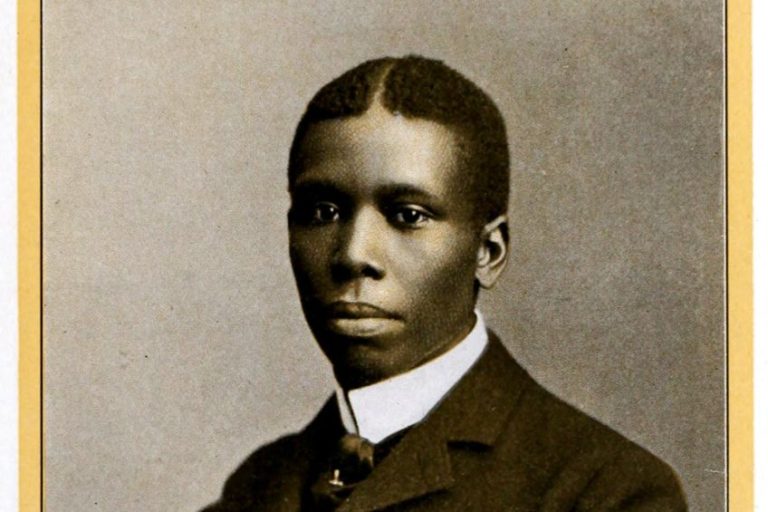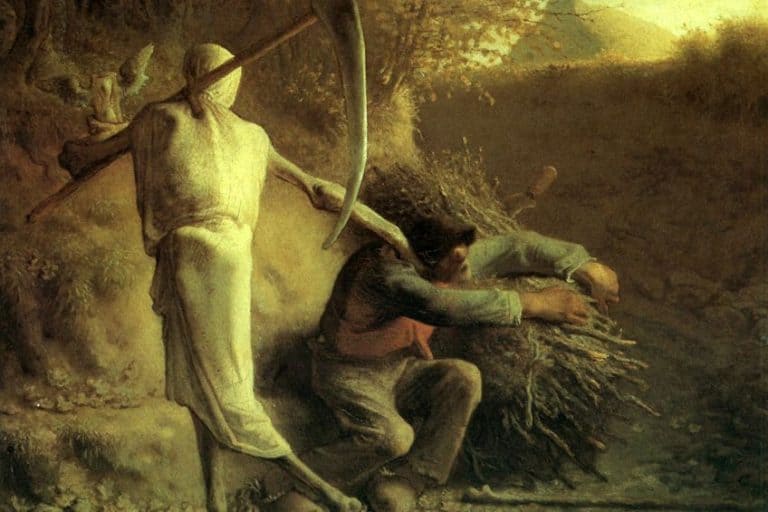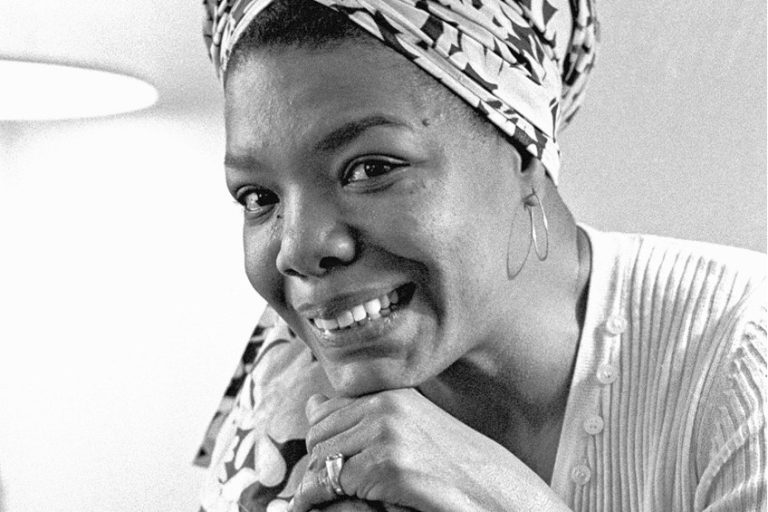“Harlem” by Langston Hughes Analysis – A Fresh Look at the Poem
Harlem by Langston Hughes is generally considered to be the best-known poem that this particular writer produced in his life. It also contains one of the most quoted sections of 20th-century poetry in general. This is why we are going to perform an in-depth Harlem by Langston Hughes analysis, alongside a discussion of the poet behind the poem, an examination of the dream deferred meaning and concept, and the influence that this poem would have on 20th-century political and cultural thought. If you would like to learn more about Harlem by Langston Hughes, then this is the place to stick around and read!
Harlem by Langston Hughes Analysis
| Date Published | 1951 |
| Type of Poem | Lyric poem |
| Rhyme Scheme | Variable |
| Meter | None |
| Topic | African American experience |
Harlem by Langston Hughes is one of the most famous texts of the Harlem Renaissance and it is also typically considered to be the most famous poem that Langston Hughes ever wrote. It is also likely the most influential. The poem, as a whole, examines the lives of African American people from Harlem, and the concept of the “dream deferred” that is expressed in the poem has come to be seen as one of the most significant contributions to 20th-century literature in general.
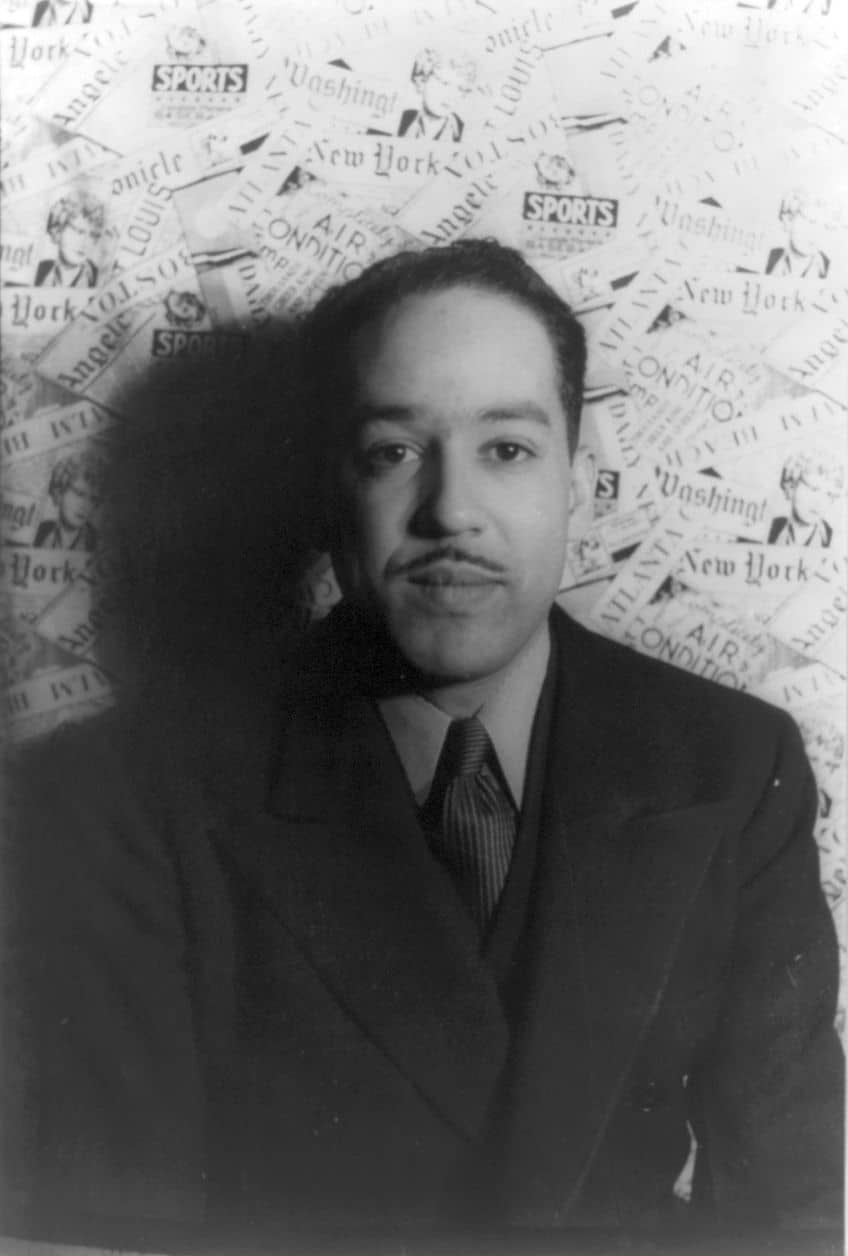
Below, we will perform an in-depth Harlem by Langston Hughes analysis for those who wish to better understand this poem. However, before we jump into that, we are first going to have a look at a few Harlem by Langston Hughes summary points so that we can ultimately answer the question: “Why did Langston Hughes write Harlem?”
Harlem by Langston Hughes Summary Points
Time is money, as they say, and we do not all have the time to read an in-depth Harlem by Langston Hughes analysis. For those people, we have instead provided a few Harlem by Langston Hughes summary points that should help you to understand the poem to some degree.
- Harlem is about African-American inequality. The poem must be understood within the context of the Harlem Renaissance and as a Civil Rights Movement text. It was written as a discussion of the way in which the so-called dream of equality on which the United States is purportedly founded was not achieved for African American people.
- Harlem uses extensive rhetorical questions. This famous Hughes poem uses a constant barrage of rhetorical questions to force us to question the absence of the dream on which the poem is based, the dream deferred. Meaning that the poem wants us to acknowledge the lack of equality that serves as the primary theme of the poem.
- Harlem makes use of an unusual structure. This text does not make use of a typical poetic form, such as a sonnet, and instead makes use of a number of stanzas that are made up of single lines, and there is no rhyme or standard understanding of rhythm. It is also a relatively short poem, and all of these aspects point towards it not being a standard poem in any sense of the term.
While this Harlem by Langston Hughes summary has provided an examination of some of the major points of the poem, it should be remembered that a full understanding will only come from a much deeper examination of the poem in question.
So, for those who want to have a deeper examination, continue reading the in-depth Harlem by Langston Hughes analysis that follows.
Biography of Langston Hughes
| Poetic Movement | Harlem Renaissance |
| Years | 1901 – 1967 |
| Place of Birth | Joplin, Missouri, United States |
| Known For |
|
Langston Hughes is often considered to be the leading member of the artistic and literary period that has come to be known as the Harlem Renaissance. This period of time from the early-20th century in the United States was noted for being a resurgence in African-American art, politics, literature, and so on. Throughout this period, Langston Hughes continued to be a major voice and figure.
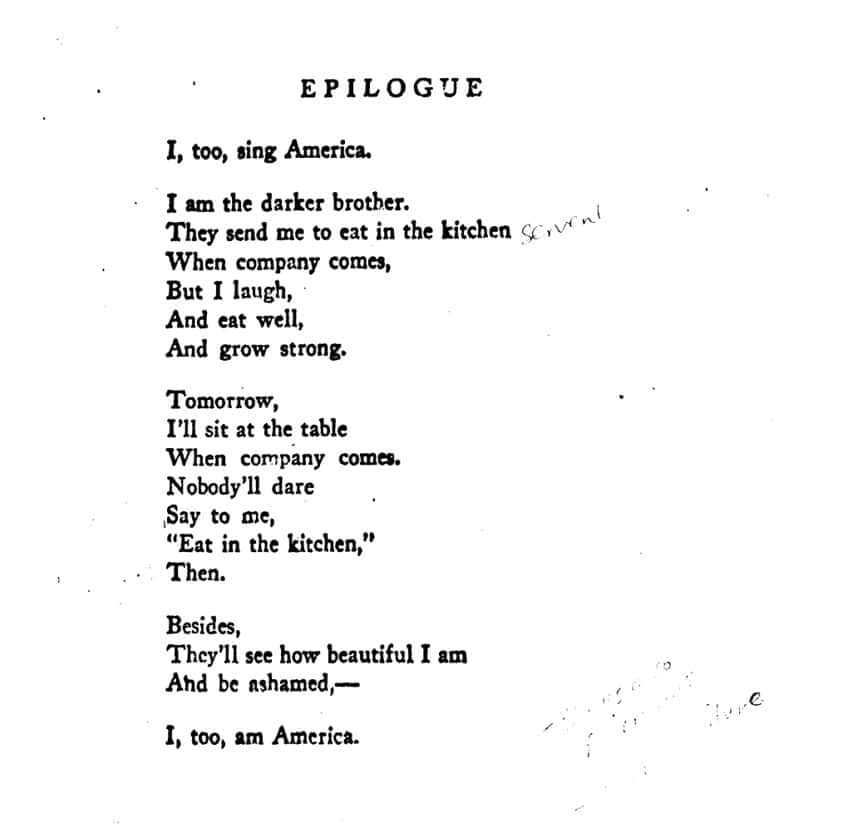
He wrote in various mediums, such as non-fiction, prose, drama, and, for the purposes of this analysis, poetry. Some of his best-known works today are poems, such as the poem we are about to discuss below as well as texts like Mother to Son and Let America Be America Again. These poems, and others, would help to solidify his place as one of the most influential writers of his time.
He would also become involved in the Civil Rights Movement in the United States, and many of his works would be an influence on this period. For instance, Martin Luther King Jr. took various pieces of inspiration from the broader work of Langston Hughes in general. However, we are going to get further into this below.
What we are instead going to do immediately after this is an in-depth Harlem by Langston Hughes analysis for those who want to understand this famous poem.
An In-Depth Harlem by Langston Hughes Analysis
Before we dive deeper into a line-by-line Harlem by Langston Hughes analysis, let us first discuss this poem in a more general sense. The text is a very short poem that is made up of eleven lines in total. These lines are not arranged in any kind of structure that could be termed traditional. Many of these lines instead stand entirely alone as stanzas. The analysis below has separated these sections based on their “stanzas”, but it must be remembered that some of the lines stand alone. We will explore why they stand alone when we come to them, especially the very first line.
However, the poem as a whole needs to be understood within the context of the African-American struggle for equality. The poem, as the analysis below will show, is focused on this question. Although, the poem also makes use of a number of other rhetorical questions to reinforce the first one.

This poem is also named after the neighborhood of Harlem in New York City. This area has long been associated with African-American people, and it has often served as a major point of East Coast African-American culture, so it is an important place that has, in this poem, come to represent the African-American populace as a whole.
So, now that we have moved beyond all of that brief introductory work, we can get started on our in-depth Harlem by Langston Hughes analysis that will go over each line of the poem in detail to explore the ideas that have been expressed in one of the best-known Civil Rights Movement poems of all time.
Stanza One
What happens to a dream deferred?
Back when I used to teach poetry, there would sometimes be a poem that followed this kind of technique. A poem that presented itself with a line, or a few lines, that stood entirely alone. A line like this may not be what we often see as a traditional stanza, but there is a reason that Langston Hughes put this first line, as well as the last line of the poem, entirely on its own. Why is this line alone?
When I used to teach, I would encourage my students to try and answer this question. Most came to realize quite quickly that it serves as a kind of powerful emphasis. A poem usually makes use of lengthier stanzas that can be read as if they were a paragraph, but a line like this forces us to stop. We have to consider it on its own. We have to see it as divorced from the rest of the poem while also being an indication of the poem as a whole.
In the case of this particular line, the most important question of the poem is asked. It simply asks us what happens to the dream that African American people have held onto when it has been put off. The idea of something being “deferred” means that it has been pushed to the side for a time.
For instance, if you decide to defer your work for a while, it means that you’re taking a break. However, it does not have a wholly positive connotation.
In the case of this particular line, it is not a term that presents us with a positive connotation. The dream here refers to the ideas upon which the United States of America purports to be founded upon. The central idea of the American Constitution was as a land of the free for all. However, in the words of Philomena Cunk, that must have come as a surprise to all the slaves.
The United States Constitution told the world that all men were created equal, and yet there were large swaths of people, those who happened to have not been born white, who did not have that same kind of freedom. The end of the Civil War in the United States led to the freeing of the slaves, but that gave way to other inequalities, such as sharecropping and the later use of Jim Crow laws that enforced segregation. So, the dream is equality, the thing that had been promised. And it has been deferred, put off, again and again.

This poem’s very first line asks the potent and powerful question: what happens to the dream that has been promised, the equality that has been promised when it has been pushed to the side repeatedly and never given to the African American people? This question forms the basis of the rest of the poem, and that is why we have spent so much time on it now. However, let’s have a look at the remainder of the poem and see how it seeks to reinforce this question.
Stanza Two
Does it dry up
like a raisin in the sun?
Or fester like a sore—
And then run?
Does it stink like rotten meat?
Or crust and sugar over—
like a syrupy sweet?
While the first line of the poem did make use of a rhetorical question, the poem has only just started with its use of rhetorical questions. The next two lines ask us our next question. They ask us if this dream that was mentioned in the first line, when it has been deferred repeatedly, does it just dry up and disappear. We are given the image of a raisin in the sun here. This provides the image of both a dried-out item alongside an image associated with dryness. So, the idea of it being dried out has been repeated three times in two lines.
The next question, which involves the next two lines, asks if this dream, when it has been deferred for so long, will instead be like a festering sore that then “runs”, presumably with pus.
We are, once again, given three images of “fester”, “sore”, and “run”. It is a disgusting image that could induce a feeling of nausea in someone who hears or reads it. This means that we have been asked if the dream will simply dry up and fade away, or if it will become worse and infect the people who hold that dream to heart?
The following question only uses one line, and it reinforces the disgust of the previous question by asking if deferring this dream will make it like a slab of rotting meat. The image of rotting meat complements the previous image of a festering sore. While the final question compares it to a sore that has crusted over, which continues the idea of a sore. In fact, for those unfamiliar, sugar has long been used as a remedy for sores. So, the image of sugar on the sore continues this image of the sore but comes to see it as something that has been accepted.

Stanza Three
Maybe it just sags
like a heavy load.
The second-last stanza makes use of two lines, and these form a single statement that should be considered. In this case, the statement asks us if this wound that has been left by the deferred dream is something that will grow heavier and more difficult to carry. Will it sag down and become even worse?
It is through these two lines that the final line of the poem, which is presented on its own, can be expressed.

Stanza Four
Or does it explode?
The final line of the poem proposes one last question. We have received imagery of disease and disgust throughout this poem as it relates to the idea of the dream deferred. Meaning that the refusal to provide the dream will lead to the desire for it becoming a festering and horrible thing. This last line reinforces that, because what if that festering sore does not wither out, ooze pus, or simply sag and become uncomfortable? What if that sore explodes? The dream could lead to violence. A dream deferred too long, taken away from people, and repeatedly promised but never delivered, over generation upon generation, is liable to lead to anger, resentment, and the eventual desire to fight for it.
The necessity for violence would never have come about if the dream had simply been provided as it had been promised, but it was never provided.
So, this may lead to righteous anger, and we also know, from a historical context, that this did basically happen. The Civil Rights Movement effectively came to an end with the passing of the Civil Rights Act of 1968 in the country after Martin Luther King Jr. was assassinated and widespread riots led to the necessity for a legislative response on the federal level.
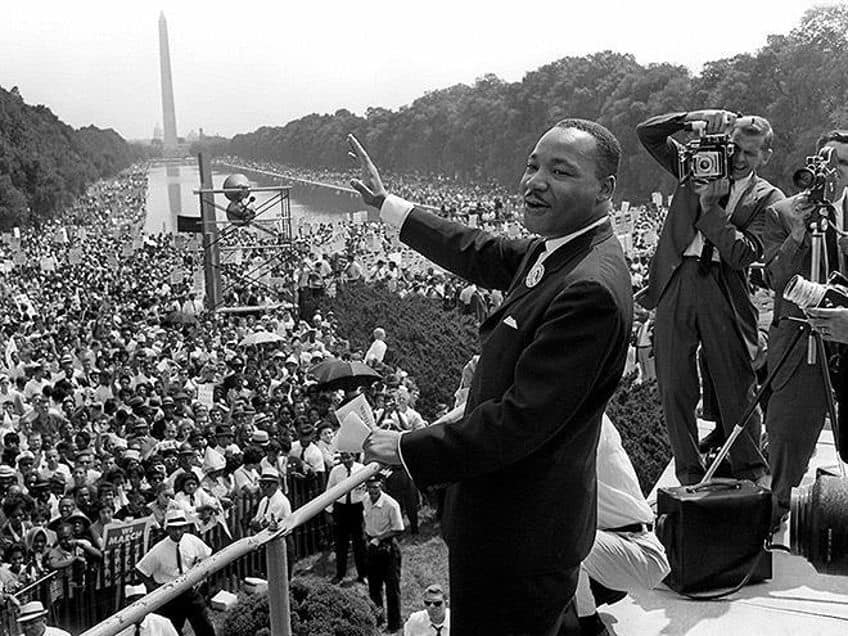
This poem also rings very true in the many anti-colonial battles that took place around the world throughout the 20th century. The international claims of organizations like the United Nations that everyone was equal, put pressure on colonial projects and ultimately led to a lot of anti-colonial violence in an attempt to end colonial power. This has been our Harlem by Langston Hughes analysis, and, hopefully, it has been an enlightening one.
The Meanings and Themes of Harlem by Langston Hughes
When it comes to the ultimate meanings and themes of this poem, they have been explored throughout the in-depth Harlem by Langston Hughes analysis above. However, as an overview of the ideas discussed above, the poem is primarily concerned with the idea of how one is to live when a dream that has been promised has been repeatedly shut down and pushed to the side. This poem must be understood within the context of the experiences of African American people who had long been promised the American Dream of equality for all.
A dream that had simply not been afforded to them despite it being a supposedly founding tenet of the United States Constitution.
The poem wants us to know that refusing this dream repeatedly has profoundly negative consequences for those who have been promised the dream, and the poem’s repeated use of rhetorical questions confronts us with this problem. The poem has remained a powerful image of the Civil Rights Movement in the United States and one that still applies to many in the country and around the world where similar promises have been made.
The Influence of Harlem by Langston Hughes
There are a number of reasons that Harlem by Langston Hughes has come to be seen as such a famous text, and some of the primary reasons for this have to do with its place in the history of African American literature in the United States. This poem, and Langston Hughes in general, have come to be seen as emblematic of the Harlem Renaissance period of the early-20th century.
The poem, through this socio-political and cultural lens, would go on to have a major impact. For instance, the dream deferred meaning and idea has been used ever since the poem’s publication and may have even had an influence on the work of Martin Luther King Jr., and especially on his “I Have a Dream” speech, which explores similar ideas to the poem.

So, when we wish to ask the question, “Why did Langston Hughes write Harlem?”, we can see the answer reflected in the meanings that this poem attempts to convey to the reader. It strives for equality and makes use of powerful imagery to try and present this to anyone who reads the poem. Furthermore, the poem had a major impact on literature, such as the title of Lorraine Hansberry’s A Raisin in the Sun being a reference to the poem.
The literary and artistic influences of the poem also contributed to its influential nature. The poem’s use of language, which took inspiration from blues and jazz music, would be emulated by other poets who wrote in subsequent eras. So, the poem may have had a political influence, but it also had an influence on works that were produced after its publication.
There are many poems out there that have managed to become some of the most influential pieces of literature ever written, and Harlem by Langston Hughes is certainly one of those poems. Today, we have examined this poem, the writer behind it, and the influence that it would ultimately exert by performing an in-depth Harlem by Langston Hughes analysis. Hopefully, this has been an enlightening examination of the poem in question and one that can aid in understanding the work in general. This is generally seen as one of the most important poems of the Harlem Renaissance, and its influence cannot be understated. For this reason, it, and many of the other poems by Langston Hughes, should also be read by those who are interested in important texts of the 20th century.
Frequently Asked Questions
What Is Harlem by Langston Hughes?
This is a 20th-century poem that has become one of the most emblematic texts of the Harlem Renaissance. This poem, and especially the dream deferred meaning and idea, has come to be seen as synonymous with Langston Hughes. The poem is concerned with ideas surrounding racial inequality and the lives of African American people in America at large and in Harlem in particular. This poem has become one of the most influential in the history of American poetry.
Who Was Langston Hughes?
This figure was a writer from the United States who would become one of the most consequential poets of the 20th century in the country. His work, which spanned prose, poetry, drama, and non-fiction, was a central part of the Harlem Renaissance period in the United States. His work, and the work of others during this period, would eventually have a major influence on the Civil Rights Movement. Langston Hughes was also an active part of the movement himself.
Why Did Langston Hughes Write Harlem?
This poem, which is inspired by other African American works, such as blues and jazz, is an exploration of the life of African American people in Harlem. The poem expresses the feelings of injustice that were felt by the black population in the United States both at the time and, for many, in the present. The poem is a powerful one that asks tough questions that necessitate tough answers. This is why Langston Hughes wrote Harlem.
What Is the Meaning of Dream Deferred?
This phrase is one that is used in Harlem by Langston Hughes, and the idea here is that the dream is something that has been put off, or deferred, and the dream, in this case, is one of equality. The poem asks us what happens to a dream that has been put off and ignored. Does the dream still survive? Can it still survive if it has been put off? It is a powerful image that can be seen echoed in later texts and speeches, such as the I Have a Dream speech by Martin Luther King Jr.
Why Is Harlem by Langston Hughes So Influential?
There are many reasons why Harlem by Langston Hughes is such an influential text. It went on to have an influence on the later Civil Rights Movement in the United States, it was seen as a central text in the Harlem Renaissance, and it would also be influential on poetry because of the style that Hughes adopted for the poem. So, there are a great many reasons that this particular poem has come to be seen as so influential.
Justin van Huyssteen is a freelance writer, novelist, and academic originally from Cape Town, South Africa. At present, he has a bachelor’s degree in English and literary theory and an honor’s degree in literary theory. He is currently working towards his master’s degree in literary theory with a focus on animal studies, critical theory, and semiotics within literature. As a novelist and freelancer, he often writes under the pen name L.C. Lupus.
Justin’s preferred literary movements include modern and postmodern literature with literary fiction and genre fiction like sci-fi, post-apocalyptic, and horror being of particular interest. His academia extends to his interest in prose and narratology. He enjoys analyzing a variety of mediums through a literary lens, such as graphic novels, film, and video games.
Justin is working for artincontext.org as an author and content writer since 2022. He is responsible for all blog posts about architecture, literature and poetry.
Learn more about Justin van Huyssteen and the Art in Context Team.
Cite this Article
Justin, van Huyssteen, ““Harlem” by Langston Hughes Analysis – A Fresh Look at the Poem.” Art in Context. November 28, 2023. URL: https://artincontext.org/harlem-by-langston-hughes-analysis/
van Huyssteen, J. (2023, 28 November). “Harlem” by Langston Hughes Analysis – A Fresh Look at the Poem. Art in Context. https://artincontext.org/harlem-by-langston-hughes-analysis/
van Huyssteen, Justin. ““Harlem” by Langston Hughes Analysis – A Fresh Look at the Poem.” Art in Context, November 28, 2023. https://artincontext.org/harlem-by-langston-hughes-analysis/.





